As summer draws to a close and children of all ages return to school, it’s important to feel connected – and to share – key health and safety tips throughout the school year. Schools play a critical role in providing students with health education, helping students feel connected, and referring students to mental and physical health services.
School connectedness can reduce student health risk behaviors and experiences. Families and schools can work together to help students connect and succeed as they head back to school.
Source: Nationwide Children’s Hospital
Source: Nationwide Children’s Hospital
On or before the first day of instruction, all K-12 students in Washington state must be up to date on vaccinations required for school. Childhood vaccination rates have fallen in recent years; now is the best time to get caught up!
Families are encouraged to beat the back-to-school rush and make a vaccination appointment with their child’s healthcare provider now. In addition, upcoming 2023 no-cost clinics will provide COVID-19 vaccines and all vaccines required for school to children through age 18 living in south King County. Children can also get vaccinated at these clinics if they are uninsured, are experiencing homelessness, or recently moved to the U.S. and do not have a healthcare provider.
These events are hosted by Go-Vax Kids, HealthPoint, Odessa Brown Children’s Clinic, and Stepping Stone Pediatrics in collaboration with school districts and community-based organizations. Check Public Health – Seattle & King County’s Find a Clinic webpage for a list of no-cost vaccination events, locations, and times. This webpage will be continuously updated as additional events are scheduled.
For a list of Required Immunizations for the 2023-2024 School Year, visit: WA Department of Health’s Website >>
Source: King County School Health
Source: Washington State Legislature
Visit our Digital Resource Center to learn more about Back to School Safety including School Bus Safety — plus, more injury and violence prevention topics year-round!